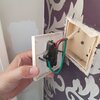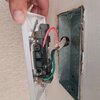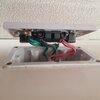I have just googled "RCD switches" I can't actually see any simply RCD switch, RCD FCU and RCD to fit inside an enclosure, but not a simply RCD switch. As to advisory it depends if owner occupier or not, although the EICR may advice depending on England, Scotland, or Wales as each slightly different then for tenant occupied it is to all intense and purposes law. Even owner occupier with children it would be hard to get away without repair.
So
C1 – There is a danger present, risk of injury and immediate remedial action required.
There is no real excuse for continued use, and if the inspector has switched the supply off with permission to test, he could not reinstate the supply.
C2 – There is a potential danger present and urgent remedial work is required.
C3 – Improvement is recommended.
Both C2 and C3 are a little vague, and you will find electricians arguing on some faults which should be used, I would say using English and common sense if it has been permitted since the war, then it can't be C2 it would have to be C3, however that does not seem to be view of electrical safety council. There is one exception where I would say does need a C2 and that is a TT supply with an ELCB-v the main reason why I would say can't allow an ELCB-v is you can't get a tester to test their operation so you don't know if it would work.
There are some faults which seem daft,
this guide page 6 shows a potentially overloaded socket, to code that is silly, you simply unplug the items, I know the on site guide gives minimum number of sockets for each room, however not having enough sockets has never been a fail.
I liked the complies with previous edition code 4, it showed dated but did not say it needed doing, but I was rather surprised when I bought this house that I was not advised to get an EICR done by the solicitor, just a RICS which although done did not arrive until near enough ready to exchange contracts. The survey actually listed some electrical items, and I can see how a non electrical person would think the electrics had been checked, we were also given vie the solicitor an installation certificate and compliance certificate which also gave the impression there had been a complete rewire, but in real terms it only covered work in the garage.
As to if the sellers had set out to con us, or if they simply did not know faults I don't know, but we had fell in love with the house so to stop sale it would have needed to be rather major faults.
But all well and good for me to say don't need an EICR, no mortgage, and I can repair at low cost, but for non electrician without the report you simply don't know what you have.




